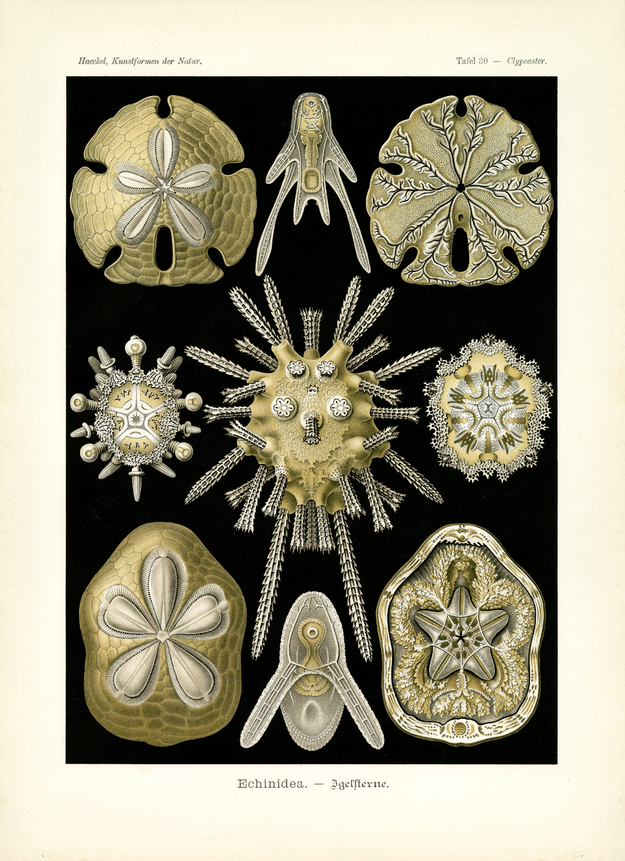Translation of the original German introduction by Ernst Haeckel:
Phylum of Echinoderma (Sterntiere); - class of Pentorchonia (Pygocinkten); - subclass of Echinidea (Igelsterne or Seeigel); - subclass of Autechinida (moderner Seeigel); - order of Clypeastronia (Blumenigel or Anthostichen).
Clypeastronia (Blumenigel) form a peculiar group among the modern sea urchins, distinguished by the formation of a five-jetted and yet bilaterally symmetrical lime shell. At the base of the rental side the mouth is found in the centre, armed with five teeth, the anus behind it (fig. 2 and 4). On top of the dorsal side the small pentagonal ‘sexual plane’ lies in the centre with five delicate ‘sexual openings’ (fig. 1 and 3). It is surrounded by five ovoid ‘small feet planes’ (Ambulacrae) that together form a flower-like figure (Anthodium); it has the basic shape of a violet. In each of the five flower petals two lines of delicate pores become visible with numerous small ‘feet’ emerging from them. The lime shell is composed, as in all modern sea urchins, of twenty meridian rows of discs that proceed in bow-shape from the upper to the lower pole of the vertical main axis. Two porous (ambulacral) lines of discs alternate regularly with two solid (interambulacral) rows of discs. – The young larva of the sea urchin (Plutellus, fig. 5 and 6) is structured in a bilateral symmetrical way and shows no trace of the five-jetted basic form of the adult animal that develops from the larva through a most peculiar metamorphosis.
Translation by VR Translators Bangalore
We've scanned the original lithography at 1200dpi on the Epson A3 scanner of A3 scanner huren. You can download a 400dpi JPEG here.
